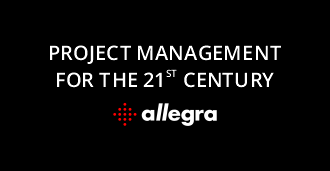An overview of what project management entails
Overview
Every organisation depends on successful project management.
Definition
Project management is the application of processes, methods, skills, knowledge and experience to achieve specific project objectives according to the project acceptance criteria within agreed parameters. It has final deliverables that are constrained to a finite timescale and budget.
9 principles of project management
#1 Project Integration Management
Project integration management is the coordination of all elements of a project. This includes coordinating tasks, resources, stakeholders, and any other project elements, in addition to managing conflicts between different aspects of a project, making trade-offs between competing requests, and evaluating resources.
#2 Project Scope Management
Scope management is the process whereby the outputs, outcomes and benefits are identified, defined and controlled. ‘Scope’ is the term used in the management of projects to refer to the totality of the outputs, outcomes and benefits and the work required to produce them.
#3 Project Time Management
Project time management involves analyzing and developing a schedule and timeline for project completion.
#4 Project Cost Management
Cost management in project management is the process of planning, estimating, budgeting, and controlling project costs.
#5 Project Quality Management
Project quality management is the process of continually measuring the quality of all activities and taking corrective action until the desired quality is achieved.
#6 Project Human Resource Management
Project Human Resource Management includes the processes that organize, manage, and lead the project team.
#7 Project Communication Management
Project communication management is a collection of processes that help make sure the right messages are sent, received, and understood by the right people.
#8 Project Risk Management
Project risk management is the process that project managers use to manage potential risks that may affect a project in any way, both positively and negatively. The goal is to minimise the impact of these risks.
#9 Project Procurement Management
Procurement Project Management is a structured process that is used to define, plan, implement, control and transition an activity from a current to a future state.
Phases of project management
In this article, we’ll cover what each of these phases entail and share tips for boosting success during each stage. Developed by the Project Management Institute (PMI), the five phases of project management include conception and initiation, planning, execution, performance/monitoring, and project close.
#1 Project Initiation
This is the start of the project, and the goal of this phase is to define the project at a broad level. This phase usually begins with a business case. This is when you will research whether the project is feasible and if it should be undertaken. If feasibility testing needs to be done, this is the stage of the project in which that will be completed.
#2 Project Planning
This phase is key to successful project management and focuses on developing a roadmap that everyone will follow. This phase typically begins with setting goals. Smart and Clear goals.
Smart Goals
A SMART goal is used to help guide goal setting. SMART is an acronym that stands for Specific, Measurable, Achievable, Realistic, and Timely. Therefore, a SMART goal incorporates all of these criteria to help focus your efforts and increase the chances of achieving your goal.
Clear Goals
CLEAR goals: Employees should work together by each using their unique skills and expertise to help their team meet its objectives.
Collaborative (Goals should encourage employees to work together collaboratively and in teams)
Limited (Goals should be limited in both scope and duration)
Emotional (Goals should make an emotional connection to employees, tapping into their energy and passion)
Appreciable (Large goals should be broken down into smaller goals so they can be accomplished more quickly and easily for long-term gain)
Refinable (Set goals with a headstrong and steadfast objective, but as new situations or information arise, give yourself permission to refine and modify your goals)
#3 Project Execution
- Project definition and a summary of the strategic brief or later the project brief.
- Drawings insofar as they are developed at this stage.
- Project programme.
- Cost plan, cost management and accounting procedures.
- Contracting and procurement strategy.
- Roles, responsibilities and authorities.
The Project Execution Phase is usually the longest phase in the project management life cycle and consumes the most energy and resources. … These processes help you to manage time, cost, quality, change, risks and issues. They also help you to manage procurement, customer acceptance and communications.
#4 Project Monitoring and Controlling
The project monitoring and controlling phase run simultaneously with project execution, thereby ensures that objectives and project deliverables are met.
As a project manager, you can make sure that no one deviates from the original plan by establishing Critical Success Factors (CSF) and Key Performance Indicators (KPI).
During the monitoring phase of project management, the manager is also responsible for quantitatively tracking the effort and cost during the process. This tracking not only ensures that the project remains within the budget but also is important for future projects.
#5 Project Closing
The project closure stage indicates the end of the project after the final delivery. There are times when external talent is hired specifically for the project on contract. Terminating these contracts and completing the necessary paperwork is also the responsibility of the project manager.
This phase represents the completed project. Contractors hired to work specifically on the project are terminated at this time. Valuable team members are recognized.
The most popular project management methods
Essentially, a methodology is a collection of methods, practices, processes, techniques, procedures, and rules. In project management, methodologies are specific, strict, and usually contain a series of steps and activities for each phase of the project’s life cycle.
Choosing the right methodology is important because it defines how we work. The right methodology will help guide a process of project efficiency. And since you already know there is no one-size-fits-all method that works for all business types, sizes or industries, it’s important that you put some time and effort into choosing the right project management methodology for your context.
#1 Agile
Agile is an iterative approach to project management and software development that helps teams deliver value to their customers faster and with fewer headaches. Requirements, plans, and results are evaluated continuously so teams have a natural mechanism for responding to change quickly.
#2 Scrum
Scrum is a framework that helps teams work together. Scrum describes a set of meetings, tools, and roles that work in concert to help teams structure and manage their work.
#3 Kanban
Kanban is a workflow management method for defining, managing and improving services that deliver knowledge work. It aims to help you visualize your work, maximize efficiency, and improve continuously. Originating from manufacturing, it later became a territory claimed by Agile software development teams.
#4 Scrumban
Scrumban is a management framework that combines important features of two popular agile methodologies: Scrum and Kanban. The Scrumban framework merges the structure and predictable routines of Scrum with Kanban’s flexibility to make teams more agile, efficient, and productive.
#5 Lean
Lean project management is a methodology that maximizes customer value and minimizes waste by optimizing the flow of materials or tasks through the system as a whole.
How to facilitate the visualization of projects
Project management visualization involves a combination of data visualization tools and methodologies, traditional communication, reporting, and task management. It means taking a visual approach to project management and execution.
- Plan the schedule with a Gantt chart.
- Structure your team with an organizational chart.
- Visualize data.
- Assess risks with a risk breakdown structure.
- Track progress with a status report.
- Reinforce information with icons.
- Use color coding to communicate effectively.
- Timelines (or Gantt charts)
- Kanban boards.
- Calendars.
Communication in PM
Without strong communication skills, project managers would find it incredibly difficult, if not impossible, to effectively manage their teams and coordinate efforts in order to bring about a project’s successful resolution.
5Cs of communication are advised for reducing misunderstandings, these are – correct, concise, clear purpose, coherent.
Different roles in PM
The project team is responsible for contributing to the overall project objectives and specific team deliverables, by contributing towards the planning of project activities and executing assigned tasks/work within the expected quality standards, to ensure the project is a success.
- Client / customer
- Project manager
- Project manager
- Project staff
- Stakeholder
success factors of efficient project management
- Agree on the project goals.
- Develop clearly defined plans with assigned responsibilities and accountabilities.
- Manage the project scope effectively.
- Cultivate constant effective communications.
- Make sure you have management support.
The skills needed to become a project manager in 2021
- be effective at planning, monitoring and reviewing;
- be able to manage resources;
- be able to motivate and encourage others;
- be decisive and able to work well under pressure;
- be aware of who the project will affect and manage the effect it will have on them;
- command respect and trust
Tasks of a project manager
- Plan and Develop the Project Idea. Every project starts as an idea.
- Create and Lead Your Dream Team.
- Monitor Project Progress and Set Deadlines.
- Solve Issues That Arise.
- Manage the Money.
- Ensure Stakeholder Satisfaction.
- Evaluate Project Performance.
Project management certifications
According to the Project Management Institute, the PMP (project management professional) is a credential examination process that is used to determine whether someone has the salience, criticality, and frequency of specialized knowledge, skills, and organization to become a project manager.
To review certification refer to our blog entailing the best ways to become a PMP.




